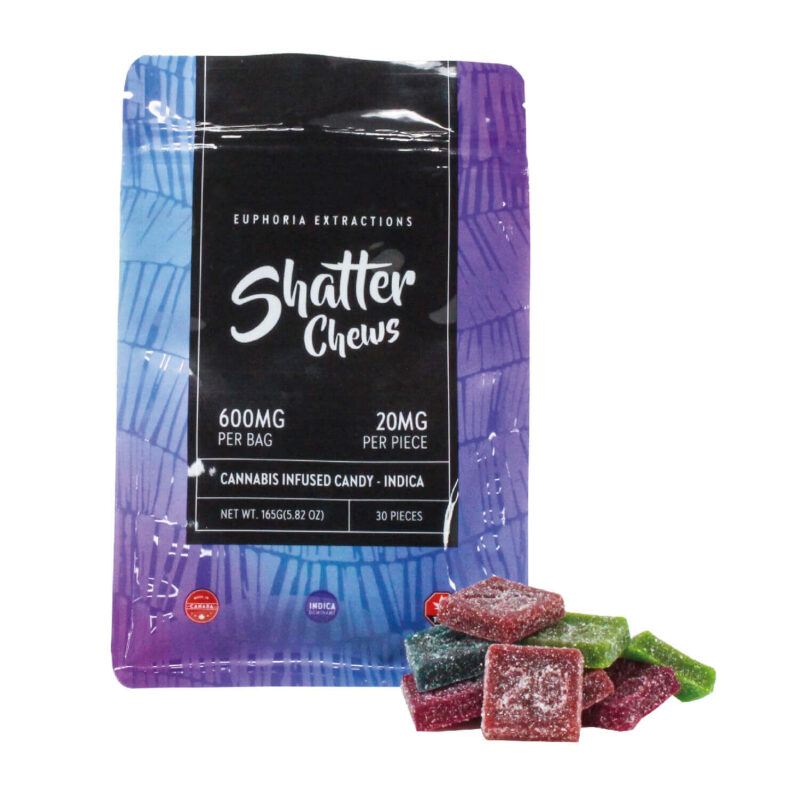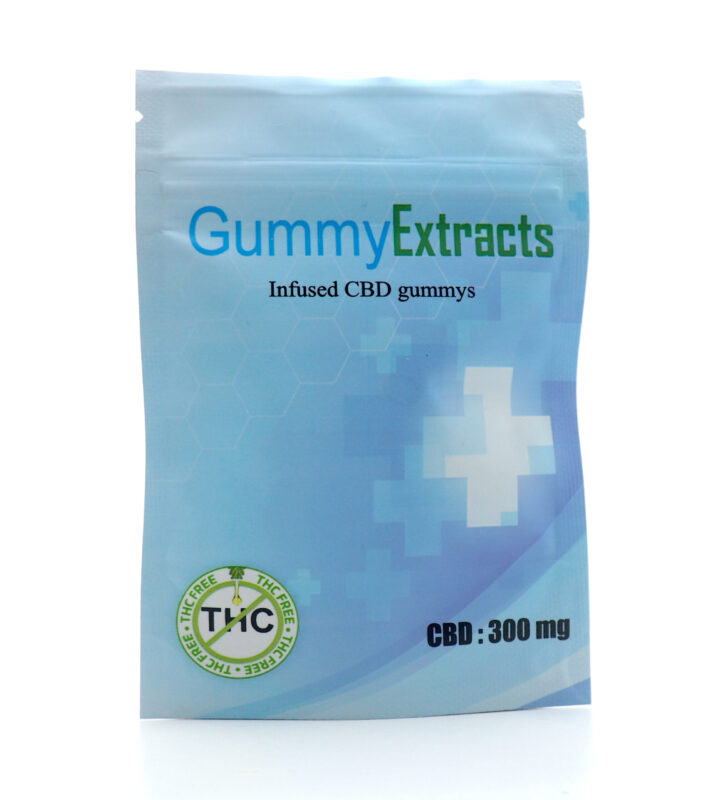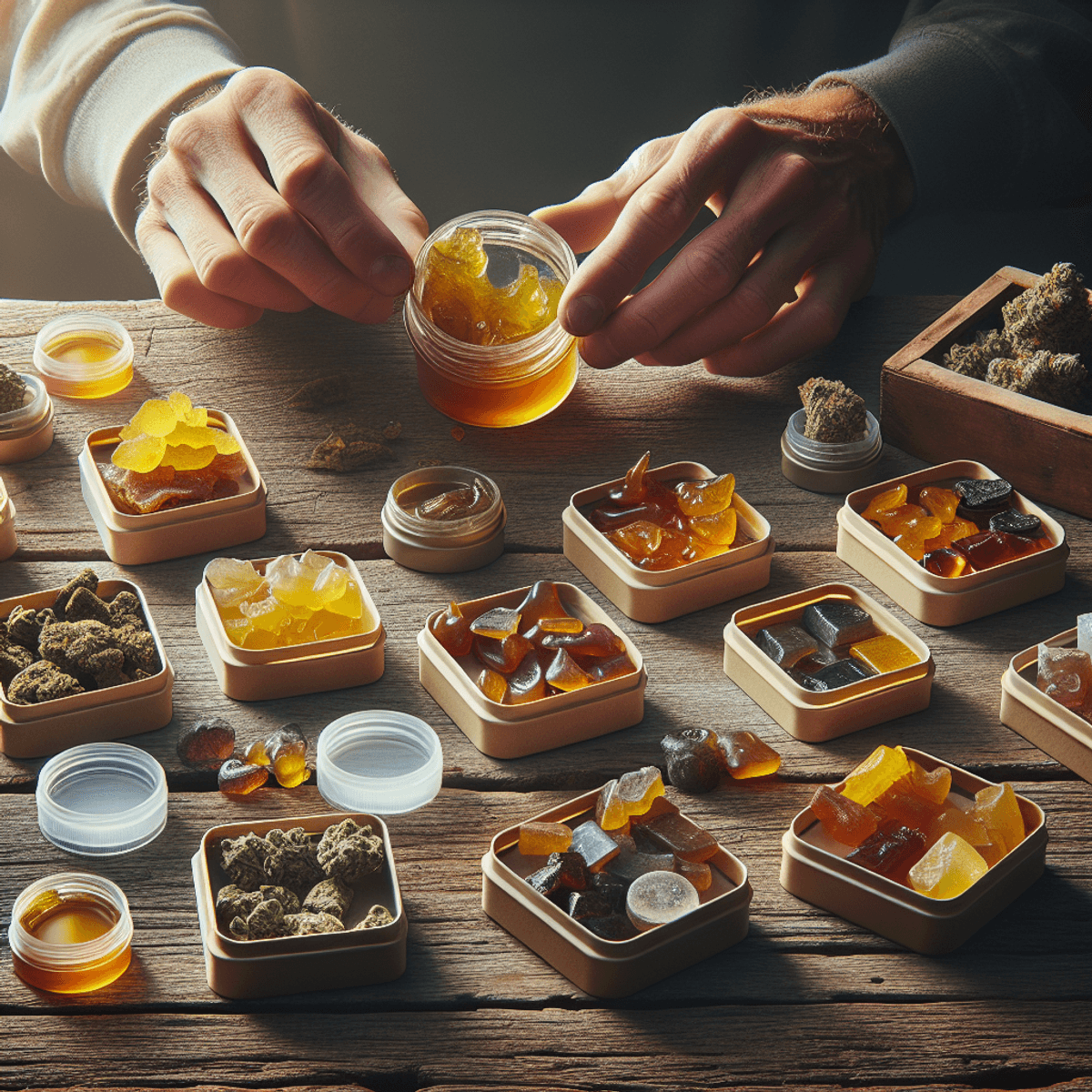Understanding Cannabis Concentrates
Cannabis concentrates are products derived from the cannabis plant, designed to deliver a more potent and efficient experience compared to traditional flower. These concentrates have gained popularity for their ability to provide users with intense psychoactive effects and medicinal benefits.
Definition and Purpose
The primary purpose of cannabis concentrates is to isolate and extract specific cannabinoids, such as THC (tetrahydrocannabinol) and CBD (cannabidiol). This process enhances the potency, allowing consumers to achieve desired effects with smaller quantities.
Comparison of Popular Types
Several types of concentrates exist, each with unique characteristics:
Shatter: A glass-like, amber-colored concentrate known for its brittle texture and high THC content. For more information about shatter, you can visit Shatter Online Canada.
Wax: Sticky and waxy in appearance, it offers a creamy consistency and moderate potency.
Budder: Similar to wax but with a creamier texture, budder provides an intense flavor profile while retaining high potency levels.
Live Resin: Extracted from fresh-frozen cannabis flowers, it preserves terpenes for enhanced flavor and aroma while maintaining significant cannabinoid levels.
Rosin: A solventless concentrate made using heat and pressure, rosin is praised for its purity and flavor retention.
Overview of Potency Levels
Potency varies among different concentrates:
Shatter: Can reach THC levels up to 90% or more.
Wax/Budder: Typically range from 60% to 90% THC.
Live Resin: Maintains similar potency as shatter but emphasizes flavor through preserved terpenes.
Rosin: Generally possesses slightly lower potency compared to shatter but is valued for its purity.
Understanding these differences assists consumers in making informed decisions based on their experience level, desired effects, and consumption preferences. Selecting the right concentrate can significantly enhance the overall cannabis experience.
If you’re interested in purchasing high-quality cannabis concentrates, it might be worth exploring online options that offer a wide variety of choices.
What is Shatter?
Shatter is a specific type of cannabis concentrate known for its distinctive glass-like appearance and translucent qualities. This concentrate stands out due to its unique texture, which can resemble hard candy or stained glass. When held up to the light, shatter exhibits a clarity that is visually appealing, indicating a high level of purity in the extraction process.
Characteristics of Shatter
Translucent and Glass-like: Shatter is typically amber or golden in color and has a brittle texture. Its rigidity allows it to break apart easily when handled, making it essential for users to exercise caution during consumption and storage.
Potency Levels: Shatter is one of the most potent cannabis concentrates available, often containing THC levels that can reach up to 90%. This high concentration results in effects that are both powerful and long-lasting, appealing particularly to seasoned cannabis users seeking intense psychoactive experiences.
How Shatter is Made
The production of shatter involves advanced extraction techniques that aim to preserve cannabinoids while removing unwanted materials. The most common methods include:
Butane Extraction: This process utilizes butane as a solvent to extract THC and other cannabinoids from the plant material. The result is a highly concentrated product once the butane is purged from the final product.
CO2 Extraction: An alternative method employing carbon dioxide under high pressure and low temperature. This technique allows for a cleaner extraction with minimal residual solvents, resulting in a purer end product.
In both cases, careful adherence to safety protocols is critical due to the volatile nature of the solvents used. Each method results in shatter that retains the desirable characteristics and potency expected by consumers. Understanding these factors aids users in selecting shatter based on their preferences and experience levels.
Comparing Different Types of Concentrates
Shatter Characteristics
Shatter is known for its distinctive brittle texture and glass-like appearance, making it one of the more visually striking cannabis concentrates. This characteristic arises from its unique extraction process, which removes most of the plant’s lipids and waxes, resulting in a form that is both powerful and aesthetically appealing. The transparency of shatter allows users to see through the concentrate, showcasing its golden-yellow hue.
Handling Shatter
Handling shatter requires a degree of care due to its fragile nature. Unlike other concentrates such as wax or budder, which can be manipulated more easily, shatter can break into sharp shards if not treated gently. To prevent breakage during handling:
Use a clean surface: A flat, non-stick surface is ideal for working with shatter.
Employ tools: Use dab tools made of stainless steel or glass to avoid any unnecessary pressure on the concentrate.
Avoid excessive force: When breaking off a piece for use, apply gentle pressure to minimize the risk of shattering it into smaller pieces.
Storing Shatter
Proper storage is crucial for maintaining the quality of shatter. Exposure to air and light can degrade the concentrate over time, leading to a loss of potency and flavor. Follow these best practices for optimal storage:
Airtight containers: Store shatter in an airtight container to protect it from oxygen exposure.
Cool, dark locations: Keep the container away from heat sources and direct sunlight. A refrigerator or cool drawer can be an excellent choice.
Avoid humidity: Moisture can damage the texture and integrity of shatter; therefore, ensure that storage areas are dry.
Understanding shatter vs. wax highlights additional differences in characteristics and handling requirements. While wax has a more pliable texture that makes it easier for beginners to handle, shatter’s brittle nature poses unique challenges. Users should be aware of these differences when choosing between concentrates based on their experience level and intended consumption method.
For those unfamiliar with the world of cannabis concentrates, it’s essential to grasp some fundamental concepts before diving in. A helpful resource is this guide on what first-time users need to know about cannabis concentrates, which provides valuable insights into different types of concentrates including shatter and wax.
By properly handling and storing shatter, users can enjoy its potent effects while preserving its quality over time. This knowledge serves not only to enhance the user experience but also ensures that individuals maximize the benefits derived from this powerful cannabis concentrate. For further understanding about weed concentrates in general, this comprehensive explanation on weed concentrates could provide additional clarity.
Wax Characteristics
Wax is a popular cannabis concentrate known for its unique texture and consistency.
1. Description
Wax has a sticky, ear wax-like appearance, making it distinct from shatter, which is glass-like and brittle. This sticky nature can make handling easier for users who may find shatter challenging due to its fragility.
2. Potency Comparison
Wax typically contains THC concentrations ranging from 60% to 90%. While this places it slightly lower on the potency scale compared to shatter, users often appreciate its robust effects and flavor profile.
3. Handling Advantages
Due to its malleable consistency, wax offers advantages for beginners. Its stickiness allows for easier extraction using tools like dabbers without the risk of breakage associated with shatter. This quality makes it particularly appealing for those unfamiliar with handling cannabis concentrates.
In addition to wax, other concentrates such as Budder and Rosin also present varying consistencies and extraction methods. Budder is creamier than wax, while Rosin, created through heat and pressure, retains many terpenes, enhancing flavor. Understanding these differences in texture and handling can help consumers make more informed choices when selecting their preferred concentrate type.
Rosin Characteristics
Rosin is a unique cannabis concentrate distinguished by its extraction method, which utilizes heat and pressure. This process results in a solventless product, appealing to those seeking purity and flavor without the use of chemical solvents. The key characteristics of rosin include:
1. Extraction Method
Heat is applied to cannabis flower or hash, followed by pressure, causing the trichomes to release their resin. This method preserves the plant’s natural terpenes and cannabinoids.
2. Flavor Profile
Rosin often boasts an intense flavor that rivals other concentrates, such as shatter and wax. Its preservation of terpenes enhances the overall experience, making it sought after for those who prioritize taste.
3. Purity Comparison
In contrast to shatter, which can contain residual solvents due to its extraction process, rosin is considered one of the purest forms of concentrate. This absence of solvents contributes to a cleaner smoking or vaporizing experience.
When comparing concentrates like shatter vs. wax, rosin stands out with its consistency, typically being more viscous than shatter yet less sticky than wax. Understanding these differences aids consumers in selecting the right product based on their preferences for flavor and handling characteristics.
Choosing the Right Shatter for Your Needs
Consumption Methods for Shatter
Selecting the appropriate consumption method for cannabis shatter is pivotal in maximizing its effects. Two primary methods of consumption include dabbing and vaporizing. Each method offers distinct advantages and disadvantages, which can significantly influence the user experience.
Dabbing Shatter
Dabbing involves using a specialized device known as a dab rig. This method entails heating a surface (often made of quartz or titanium) to a high temperature, then applying a small amount of shatter directly to the heated surface. The resulting vapor is inhaled.
Advantages of Dabbing Shatter
High Potency: Dabbing produces a more concentrated vapor, delivering higher THC levels with each hit. Users often experience immediate effects due to rapid absorption into the bloodstream.
Flavor Preservation: When done correctly, dabbing can preserve terpenes, enhancing the flavor profile of the shatter.
Customization: The ability to control temperature allows users to tailor their experience, adjusting flavors and potency.
Disadvantages of Dabbing Shatter
Learning Curve: For novices, mastering the technique can be challenging. Properly heating the nail without overheating takes practice.
Equipment Required: A dab rig, torch, and accessories are necessary, which may increase initial costs.
Potential for Overconsumption: The potency of dabbing may lead to unintentional overconsumption, especially for those with low tolerance.
Vaping Shatter
Vaporizing involves using a vaporizer that is compatible with concentrates. Unlike dabbing, this method typically does not require a torch. Instead, vaporizers heat shatter at lower temperatures to produce vapor without combustion.
Advantages of Vaping Shatter
Ease of Use: Vaporizers are generally easier to use than dab rigs. Many devices offer preset temperatures and user-friendly interfaces.
Portability: Vaporizers are often more portable than traditional dab rigs, making them suitable for on-the-go consumption.
Healthier Option: Vaping eliminates combustion-related toxins found in smoking and may be less harsh on the lungs.
Disadvantages of Vaping Shatter
Lower Potency: Vaporizing may produce less concentrated vapor compared to dabbing. Some users find that they need to consume more product to achieve desired effects.
Device Dependency: Quality vaporizers can be costly. Users must also ensure their device is compatible with concentrates like shatter.
Flavor Loss Potential: If not used correctly, some vaporizers may not fully capture the nuanced flavors present in shatter.
Considerations for Choosing
When determining how to choose cannabis concentrate based on desired effects and consumption preferences:
Evaluate your experience level with cannabis concentrates.
Consider whether you prefer immediate effects from dabbing or a gentler approach through vaping.
Assess your tolerance levels; higher THC concentrations from shatter demand cautious usage.
Reflect on convenience versus potency; while dabbing offers stronger effects, vaporizers provide portability.
Understanding these factors aids in making an informed decision regarding the most suitable method for consuming shatter. Each individual’s preferences will shape their ultimate choice between dabbing and vaping. As such considerations evolve alongside personal experiences with cannabis concentrates, selecting the right approach becomes essential in optimizing enjoyment and effects derived from shatter.
Dosage Guidelines for Shatter
When it comes to dosage practices for shatter, especially for newcomers, starting small is essential. The potency of shatter can reach up to 90% THC, making it one of the most concentrated forms of cannabis. Here are some recommended practices:
1. Begin with a minimal amount
For beginners, a small dab or a puff from a vaporizer can provide an adequate introduction to the effects of shatter. This approach helps gauge individual tolerance and minimize the risk of adverse effects.
2. Wait between hits
It’s crucial to allow sufficient time between doses. Effects can take several minutes to manifest, so waiting will help users assess their response before consuming more.
Factors to consider when determining the right dosage include:
Experience level: New users should opt for lower doses, while experienced consumers may require more to achieve their desired effects.
Desired effects: Whether seeking euphoria from THC or therapeutic benefits from CBD, the intended outcome influences how much shatter one should consume.
Adhering to these guidelines ensures a safer and more enjoyable experience with cannabis concentrates.
Effects and Benefits of Shatter
Cannabis shatter is known for its strong psychoactive effects, which can create an intense experience for users. Here are the key effects:
Recreational Effects
Euphoria: Many users report feeling extremely happy and uplifted, with a significant boost in mood.
Altered perception: Shatter can change how we perceive things, making colors brighter, sounds clearer, and textures more pronounced. Some users may also feel like time is passing differently.
In addition to these recreational effects, shatter also offers several medicinal benefits that make it appealing for people looking to relieve various health issues. Here are some notable benefits:
Medicinal Benefits
Pain relief: The high levels of THC in shatter can effectively reduce chronic pain conditions, making it a popular choice for arthritis, migraines, or other ongoing pain problems.
Anxiety reduction: Many users find that shatter helps decrease feelings of anxiety and stress. It may have a calming effect that allows individuals to feel more relaxed in difficult situations.
Shatter’s medicinal uses go beyond just these benefits. Here are a couple of other potential advantages:
Anti-inflammatory properties: Users may experience less inflammation, which can help with recovery from injuries or conditions involving swelling.
Nausea/Vomiting reduction: Shatter can be helpful for those undergoing treatments like chemotherapy by managing nausea and increasing appetite.
While the strong psychoactive effects and medicinal benefits of shatter are appealing, it’s important to be cautious because of its high THC content. New users should start with small amounts to understand how it affects them personally. It’s essential to know both the positive outcomes and possible risks associated with using shatter for responsible consumption.
Risks and Side Effects of Using Shatter
High THC content in cannabis concentrates like shatter presents certain risks. Understanding these risks is crucial for safe consumption and informed choices.
Potential Risks Associated with High THC Content
Overconsumption Symptoms: Users may experience nausea, vomiting, anxiety, or paranoia when consuming excessive amounts of shatter.
Impaired Abilities: High doses can lead to disorientation or impaired motor skills, which can be particularly dangerous if operating machinery or driving.
Individual Variability: Symptoms may vary based on individual tolerance levels; novices are especially susceptible to these effects.
Legal Considerations in Various Regions
Regulatory Landscape: The legality of cannabis concentrates varies significantly across regions. While some areas have legalized recreational and medicinal use, others maintain strict prohibitions.
Local Laws: It is essential for consumers to check local laws regarding possession, sale, and consumption of shatter.
Licensed Dispensaries: Purchasing from licensed dispensaries helps ensure compliance with regulations and reduces the risk of acquiring contaminated or unsafe products.
Responsible Use Practices
Given the potency of shatter and its associated risks:
Start Small: New users should begin with minimal amounts to gauge their individual response before increasing dosage.
Educate Yourself: Familiarize yourself with the specific strain and its effects as well as your personal tolerance level.
Safe Environment: Use shatter in a comfortable setting where help is available if adverse reactions occur.
Understanding these risks allows users to make informed decisions about their consumption practices. Awareness and responsibility play key roles in enjoying the benefits of shatter while minimizing potential negative effects.
Frequently Asked Questions about Shatter
Shatter, a popular cannabis concentrate, often raises questions among users, particularly regarding its nature, production, consumption methods, and legal standing. Below are some frequently asked questions that provide clarity on these aspects.
What is Shatter?
Shatter is a type of cannabis concentrate known for its glass-like appearance and high THC concentrations, often reaching up to 90%. It offers potent psychoactive effects and is favored by experienced users due to its intensity.
How is Shatter Made?
The production of shatter involves extraction processes using solvents like butane or CO2. These methods strip the cannabis plant of its cannabinoids and terpenes while removing the solvent post-extraction. This results in a pure form of concentrate with distinct properties.
What are the Different Methods to Consume Shatter?
Several methods exist for consuming shatter:
Dabbing: Involves heating a nail and applying shatter directly onto it, allowing immediate vaporization.
Vaporizing: Utilizes a vaporizer designed for concentrates. This method is often smoother than dabbing.
Each method has its own advantages; dabbing provides intense effects quickly, while vaporizing may be gentler on the lungs.
Is Shatter Legal?
The legality of shatter varies across regions. In many areas where cannabis is legalized for recreational or medicinal use, shatter is permissible. However, it is crucial to check local laws before purchasing or using shatter to avoid legal complications.
Safety Considerations
For those new to cannabis concentrates, starting with low doses is advisable due to the high potency of shatter. Understanding personal tolerance levels can enhance the experience while minimizing potential adverse effects.
By addressing these FAQs about shatter, users can make informed decisions regarding their consumption and enjoy this potent concentrate safely.
FAQs (Frequently Asked Questions)
What are cannabis concentrates?
Cannabis concentrates are potent forms of cannabis that have been processed to extract the active compounds, primarily THC and CBD. They come in various types, including Shatter, Wax, Budder, Live Resin, and Rosin, each with unique characteristics and potency levels.
How is Shatter made?
Shatter is created through a process called extraction, which typically involves solvents like butane or CO2. This method separates the cannabinoids and terpenes from the plant material, resulting in a translucent, glass-like concentrate with high THC content.
What are the differences between Shatter and Wax?
Shatter has a brittle texture and is glass-like in appearance, while Wax has a sticky consistency resembling ear wax. Shatter is generally more potent (up to 90% THC) compared to Wax (60-90% THC), and handling Shatter requires careful storage to prevent breakage.
What methods can I use to consume Shatter?
Shatter can be consumed through dabbing or vaporizing. Dabbing provides a quick onset of effects but requires specific equipment. Vaporizing is often considered more user-friendly for beginners and allows for controlled temperature settings.
What are the effects and benefits of using Shatter?
Shatter can produce psychoactive effects such as euphoria and altered perception. It also offers medicinal benefits including pain relief and anxiety reduction due to its high THC content.
Are there any risks associated with using Shatter?
Yes, potential risks include overconsumption due to its high THC levels, which can lead to symptoms like anxiety or paranoia. Additionally, legal considerations vary by region, so it’s important to be aware of local laws regarding cannabis use.








